It’s the last of its kind,” says Hutton Wilkinson of Dawnridge, the Los Angeles home he and his wife, Ruth, bought from the estate of famed Hollywood artists Tony and Elizabeth Duquette. Best known for their work designing some of film’s most notable sets, the Duquettes were independent talents with a combined creative portfolio that includes interiors, costumes, paintings, furniture—even a one-man show at the Louvre.
Having worked for Tony for the better part of 30 years, Hutton promised his mentor he would do everything he could to save the 1949 property from demolition and, with Ruth by his side, embarked on an act of respectful restoration. Using furniture and art made by Tony and Elizabeth, the couple transformed the home into an elevated version of its former glory and expanded its acreage through the purchase of surrounding real estate.
Hutton has artfully documented the life of this iconic residence—through fire, reconstruction, and redecoration—in his new book, Tony Duquette’s Dawnridge. Featuring a foreword by Hamish Bowles and photographs by Tim Street-Porter, its pages read like a good conversation in tribute to the home’s former owners. Stories of cocktail parties attended by Greta Garbo and Aldous Huxley, pictures of rooms staged with pieces from The Sandpiper, Camelot, and Goodbye Charlie, and a heavenly garden containing temples, pagodas, and koi are just a taste of what you’ll find in this covetable tome.
Below, read our extended conversation with Hutton, in which the designer sheds additional light on the people and the property that make up this residential portrait.
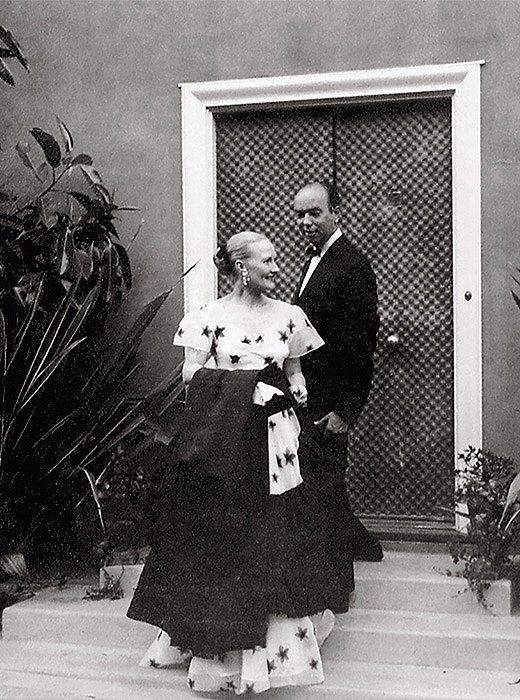
Tony and Elizabeth Duquette outside Dawnridge the year the house was completed. Photo courtesy of the Duquette Archives.

Tony saw things differently than we do. Where we see a hubcap, he saw a monstrance in a church.
One Kings Lane: Why do you feel it’s important to preserve and continue to build upon a property like this?
Hutton Wilkinson: It’s total Los Angeles history. The people who walked through these rooms… I always say that if these walls could talk they would scream. And Dawnridge is Tony’s individual vision. I think that’s important to note because, particularly now, so few people are willing to express their individuality for fear of being singled out or attacked or criticized—and Tony had no fear of that. He had no apologies. He never compromised in his vision, whether for clients or for himself, and that’s a really important rule because the minute you compromise you lose.
Tony and you seemed to share an appreciation for mixing high and low—the 99-cent mirrors from Pick ’n Save, for example, or the spray-painted drapes, or the sunburst screen fashioned partly from hubcaps.
Tony had no snobbery of materials. He used to say things like “I work equally with solid gold or gold paper.” There was the beautiful emerald brooch that was made for Beegle [Beegle was Elizabeth Duquette’s nickname], but he didn’t quite like the color of the stone—he preferred very pale aquamarines, and the color of this one was just too deep—so he painted it with green house paint. In other words, it didn’t matter to him if it was a million-dollar item or a ten-dollar item. In reality Tony was frugal, but he lived like a prince. He was clever.

The drawing room, featuring a chandelier blooming with Venetian glass flowers.

Columns fashioned from air filters flank a door painted by Elizabeth in the entrance hall.
Where do you think creativity like that stems from?
Tony saw things differently than we do. Where we see a hubcap, he saw a monstrance in a church. He was also a child of the Depression, so he knew value, which he learned from his mother. When the Depression happened the first thing she did was she went out and bought a full-length mink coat because she knew it would last forever and she wouldn’t have to go out and buy a new cloth coat every year and she’d always be dressed like a lady and she’d be warm! These were the kinds of values he had. He had all his clothes made in London not because they were expensive but because he knew that they would last forever.
What’s your definition of beauty?
It’s indefinable. It’s in the eye of the beholder. It’s such a personal quest. What I will say is that you can’t have beauty without ugly. You can’t have rich without poor. You can’t have dark without light. And beauty is not pretty. Pretty is sweet, but with beauty you have to throw something ugly in the mix in order to create it.
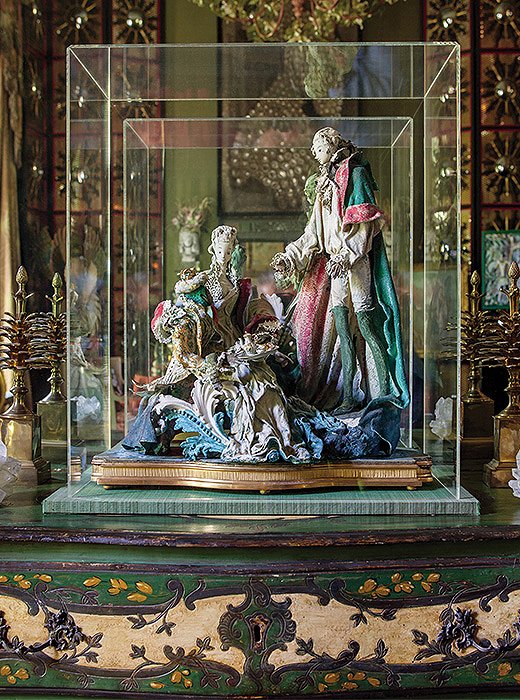
Models of costumes Tony designed for the 1952 San Francisco Opera production of Der Rosenkavalier.
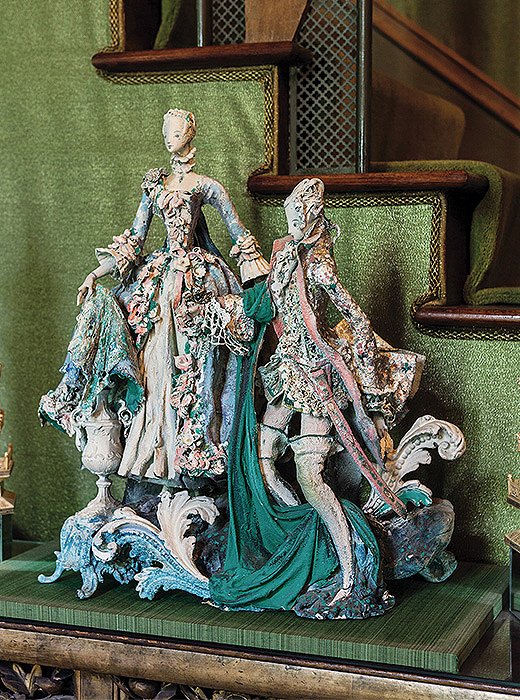
More of Tony’s Der Rosenkavalier costume designs.

Beauty is not pretty. Pretty is sweet, but with beauty you have to throw something ugly in the mix.
Do you ever find yourself lacking creative ideas or feeling burnt out from work?
I don’t, and I’ve never really had a vacation. For me a vacation—going to see palaces and museums and meeting people—it’s all work. And I genuinely love what I do. I’m not the type who wants to sit on the beach and do nothing, and neither was Tony. He never just sat around. He always worked. And he was extremely well read, erudite really, but you know what? I never saw him reading a book!
What’s the most important lesson Tony taught you?
Never compromise. If your inner voice tells you it’s supposed to be blue, it’s supposed to be blue. The minute you second-guess yourself, you’re in trouble. You just have to do it. You will never be led wrong by the inner voice. The other thing we used to do, we’d call it the dao of decoration, which is to follow the path of least resistance. In other words, when the deer is ready to be shot it will come into the forest. When you go shopping you’re not necessarily going to come back with what you set out to get, but you’ll come back with something—and it’s not going to happen overnight. It takes a while to get it to look the way it looks. You have to find things on trips, you have to experience them, you have to inherit them. Things have to come to you, I think.

The gardens feature a temple crafted of Indian wood panels, a koi pond, and a Vietnamese wedding boat.

The one thing Tony hated was one perfect rose. He wanted a jungle. He wanted something fantastic.
There are some notable properties that appear to exist without blemish, but Dawnridge, with its perfectly imperfect, crafted elements, comes across as something touched by human hands. Did you and Tony have any shared opinions on perfectionism?
The one thing Tony hated was one perfect rose. He wanted a jungle. He wanted something fantastic. Every single thing in this house has a story. Who it came from, where it had been, what it was made of—and that’s what it’s always been about. Perfection was not our thing. No way, no how.
Growing up, did you anticipate that you’d become the person you are today?
Yes, because I believe entirely in creative visualization. Every single thing that I’ve found or owned or did or done has been a result of creative visualization. I wanted to work with Tony since I was in the seventh grade, and I got my chance at 17. Even this house—a house with a balcony across the top with this layout—I imagined it as a child and as a teenager.

Never compromise. If your inner voice tells you it’s supposed to be blue, it’s supposed to be blue. The minute you second-guess yourself, you’re in trouble.
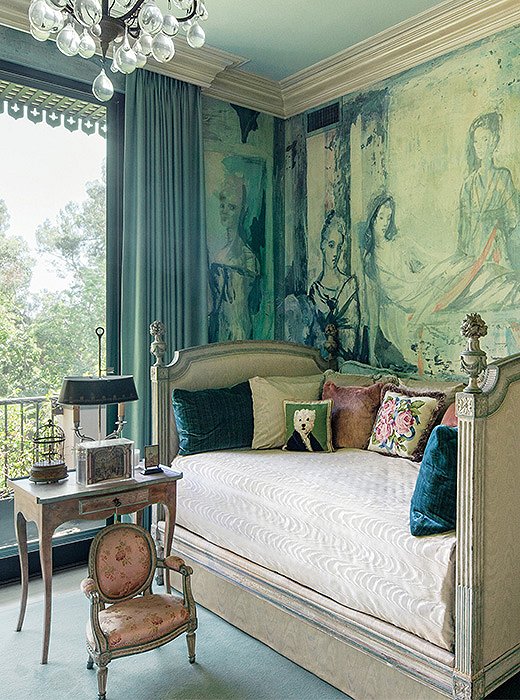
Wall coverings in Ruth’s sitting room were made from enlarged photographs of paintings by Elizabeth.
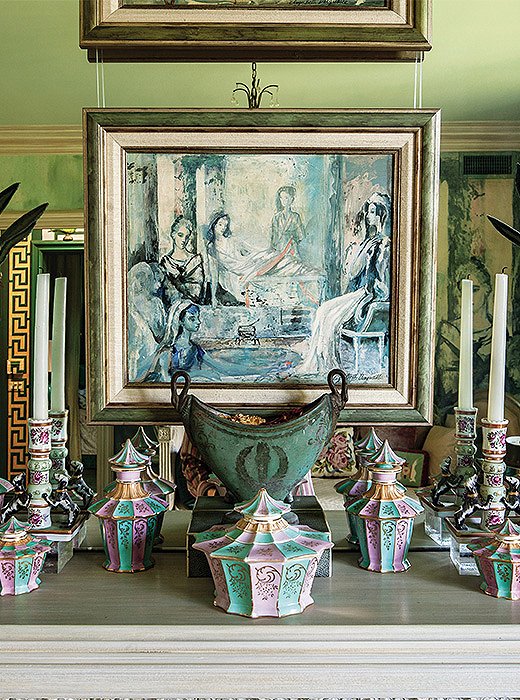
Elizabeth’s original paintings hang above a fireplace.
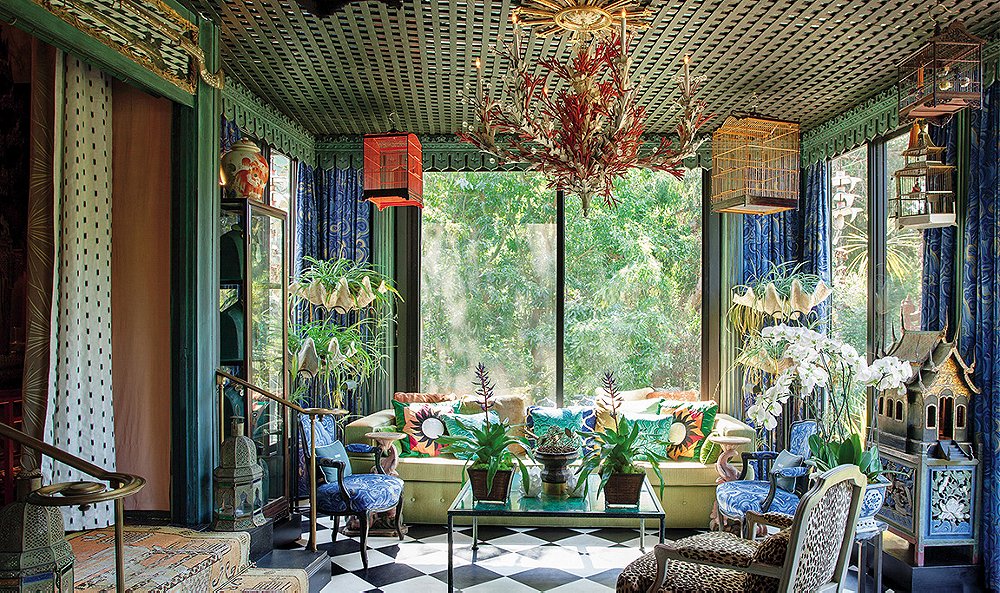
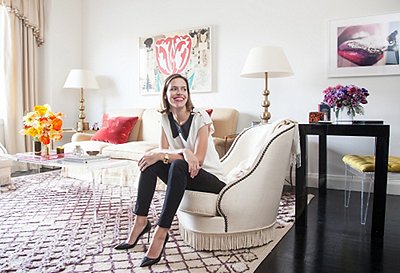
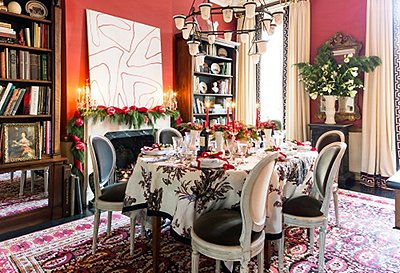
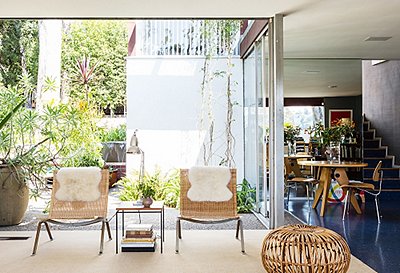

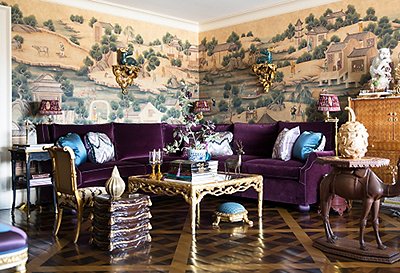
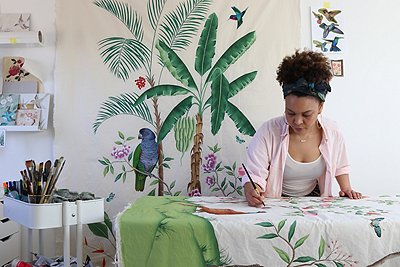
Join the Discussion